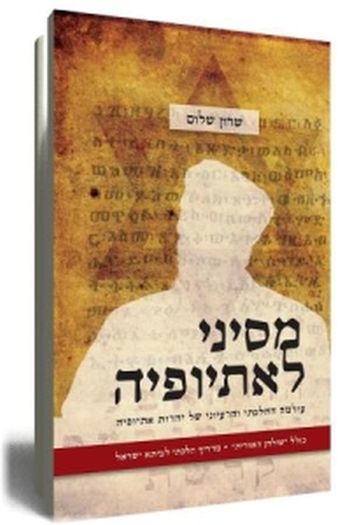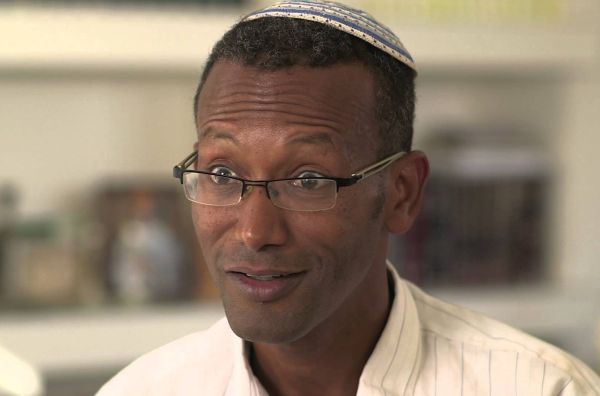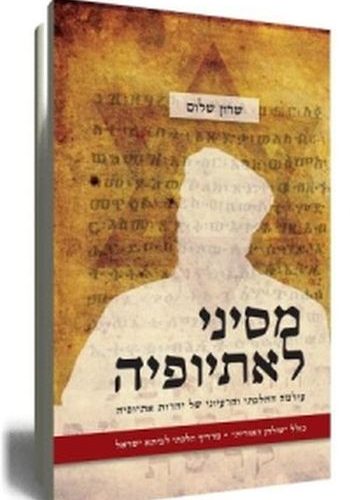

From Sinai to Ethiopia: The Halakhic and Conceptual World of Ethiopian Jewry, By Dr. Sharon Shalom, Translated from Hebrew by Jessica Setbon, 300 pages, 2016, Geffen Publishing.
In “From Sinai to Ethiopia: The Halakhic and Conceptual World of Ethiopian Jewry,” Dr. Sharon Shalom offers readers an excellent and concise view of how the customs and traditions of the Ethiopian Jewish community differ from Jewish Law observed by the rest of the Jewish world.
I remember clearly the night in 1991 when the last of the Ethiopian Jewish community was airlifted to safety in Israel. It was a Saturday night only a few weeks after the Gulf War of 1991 with Iraq had ended. Israelis were still getting used to not needing to carry gas masks with them everywhere that they went. The secret mission to rescue the Ethiopians was undertaken on Shabbat with permission from the Rabanut due to the urgency of the operation. Ethiopia was coming to the end of a decade long civil war. Its government was toppling.
I was a student at the Hebrew University at the time and watched the news reports live on Israeli television together with a mixed group of Israelis, Americans and other foreign students. Many people cried as they saw the images of the planes landing in Israel.
Anyone who lived through the 1980’s remembers the great famine which struck Ethiopia as a result of its civil war. Musicians banded together to record albums to raise money for famine relief in Africa. There was the Live Aid concert held in the summer of 1985, a worldwide telethon which raised more than $100 million. That would probably be more than $1 billion today.
At the same time, the Jewish community around the world worked to rescue the Ethiopian Jews. Their immigration to Israel had begun in the late 1970s. The operation of 1991 was the culmination of those efforts.
The saga of the Ethiopian community’s journey to Israel began in 1973. In that year Rabbi Ovadia Yosef, who was serving as Israel’s Sephardic Chief Rabbi at the time, issued an official decree that the Ethiopians were in fact Jews and did not need to convert. The Israeli government followed suit in 1975, including the Ethiopians amongst Jews from around the world who have a right to come to live in Israel under its Law of Return.
There was a great deal of resistance, at first, by many Orthodox rabbis to accepting the Ethiopians as Jews. The Israeli rabbinate did not officially accept Rabbi Yosef’s ruling and said that the community’s members needed to at least go through a pro forma conversion to Judaism.
The problem was that no one knew for sure what the origins of this community were. Are they the descendants of people sent back to Africa by King Solomon with the Queen of Sheba? Are they descendants of exiles from the destruction of either the First or Second Temple?
In the end it was decided that all Ethiopian Jews would go through an immersion in a mikveh – a ritual bath. This was to ensure that none of them were bastards under Jewish Law. A bastard – the child of adultery or incest – may not marry. But a convert is considered to be born anew and so such a status does not apply to a non-Jew who converted no matter who their parents were.
The Ethiopian Jewish community calls itself Beta Israel. Its religious leaders are called Kes.
The bulk of “From Sinai to Ethiopia” is a comparison of Ethiopian Jewish law and traditional Jewish law. Dr. Shalom gives the reader an example of the Ethiopian tradition followed by what Jewish law is on the same issue. Then he explains what Ethiopians must do today. In most cases it seems that they have adopted the more stringent custom between the two traditions.
While some of the examples which he gives are mundane, many more are down right fascinating. For example, the Ethiopians have a different concept of what constitutes Hametz. As we know, Hametz is defined as anything made from the five grains – wheat, rye, barley, oats and spelt – other than the matzah, bread which has not been allowed to rise before it was baked. This includes all liquids, such as whiskey and beer, and anything and everything which has any ingredients made from grain.
For Ethiopians, however, this does not only apply to things made from grain, but anything that needs to be cooked or baked. This is because if our ancestors did not have the time to bake real bread the night that they left Egypt then so too we must infer that they had no time to prepare cooked foods. While one may cook on Passover, this food must be eaten on the same day on which it is prepared. So no leaving the leftovers in the fridge for lunch the next day.
The one exception is for Shabbat. Since cooking is prohibited from sundown the night before, food cooked on Friday may be eaten on Saturday.
–


Dr Sharon Shalom
–
Every week we read a section of the Tora in the middle the morning services on Shabbat. The Tora reading is obligatory under Jewish law and is one of the things that can only be done when we have a quorum of at least ten men present. But Ethiopians do not believe that it is mandatory and there tradition has been to read the Tora after the Shabbat services have concluded.
Most interestingly, the Ethiopians never had a tradition of celebrating Hanukah as a holiday. This makes sense since Hanukah commemorates events that occurred in the Second Century BC, more than 400 years after the destruction of the first Temple in Jerusalem by the Babylonians.
There are so many more examples, but you will need to read the book to find out what they are.
I am sure that plenty of scholars have attempted to date the origins of the Ethiopian Jewish community based on how their traditions differ from the rest of the Jewish world. If they have any Tora reading at all then they must have had contact with other Jews after the first Temple was destroyed. But since their prayers are different then they must have lost contact before the time of the Mishnah. Others might even claim that it means there was no tradition of an oral law before the era of the Rabbis which began about the same time of the Roman conquest of Israel in the first century BC.
(I say BC instead of BCE because I think that the latter is just plain silly. Even if we say Common Era instead of before christ we are still counting the years based on when the Christians believe that Jesus was born.)
Maybe? Or maybe their different experiences over several millennia caused alterations in their understandings of the oral law.
In any event, the Ethiopians are now an integral part of Israeli society. In spite of problems with full integration and the fact that most live segregated from the rest of Israeli society, they are disproportionately represented in the IDF’s officer corps and can be seen everywhere in the country.
Jews should see three different traditions in Judaism instead of only two: Ashkenazic (European), Sephardic (Middle Eastern) and Ethiopian.
To order the book from Geffen click here.
To order the book from Amazon click here.
- On Turning 50 and Other Observations - 8/7/2020
- Pesach Movies To Watch While You Social Distance - 4/12/2020
- You vote for Likud – Not BIBI - 9/16/2019





